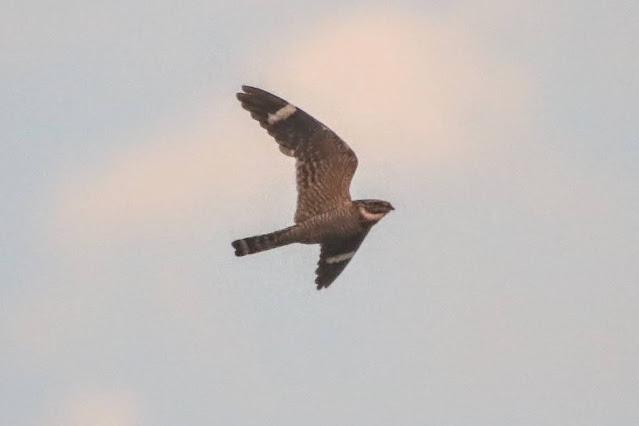As the one year anniversary approached since I discovered a bat cave in my Phoenix neighborhood, I was keen to visit the site again. Early June was uncharacteristically pleasant, barely reaching the one hundred degree mark during the day. So it wasn't a difficult decision to head to the site, near 40th Street along the Arizona Canal, to watch Mexican free-tailed bats swarm out at sunset.
Last year, the summer migrants departed their daytime roost in the thousands, in an endless undulating cloud that lasted close to an hour. It was late June, and the numbers could have included some new fledglings from nests hidden in the long floodwater tunnel. That's at least one possible reason why the bats departing the cave were only a trickle, maybe not even in the hundreds on the early June evening I recently visited the site.
There weren't enough bats or sunlight to catch any pictures of the creatures except for one of a lone individual that preceded most of the others by around twenty minutes. It seemed to have second thoughts about departing the cave so soon and attached itself to an outside wall to get some last winks there instead of returning to the tunnel like some other early birds. Meanwhile overhead, lesser nighthawks had filled the twilight sky, giving me an alternate species to photograph in flight.
Nighthawks and cliff swallows are two long-distance migratory birds that fly from South America to destinations in North America like Phoenix for their breeding season. While the swallows build mud nests under bridges - our urban cliffs - the nighthawks nest in the open desert, on rocky ground where females shelter their eggs and nestlings during the heat of the day. Last summer on a morning run through a a patch of desert adjacent to Granada Park, I inadvertently disturbed a resting, nesting bird.
The bats' recent nightly departure might have also been delayed by the strong evening wind or by the unusually large crowd of human visitors milling about their abode.
A sign above the barred tunnel indicates that visitors might be able to smell the mammals' distinctive odor, described as 'beer and taco shells.' However I'm not sure the sour smell was those two favorite imbibements of mine. But where I think the tunnel leads, two miles east where it opens up further down the Arizona Canal, a similar aroma wafts in the air as I pass by on my morning runs.
Just maybe, hopefully, last summer's thousands of bats have discovered a new favorite exit that we spectators haven't.
 |
| Lesser nighthawk over the Arizona Canal near 40th Street. |
 |
| Lesser nighthawk over the Arizona Canal near 40th Street. |
 |
| Mexican free-tailed bat outside the flood tunnel near 40th Street and the Arizona Canal in Phoenix. |
Comments
Post a Comment